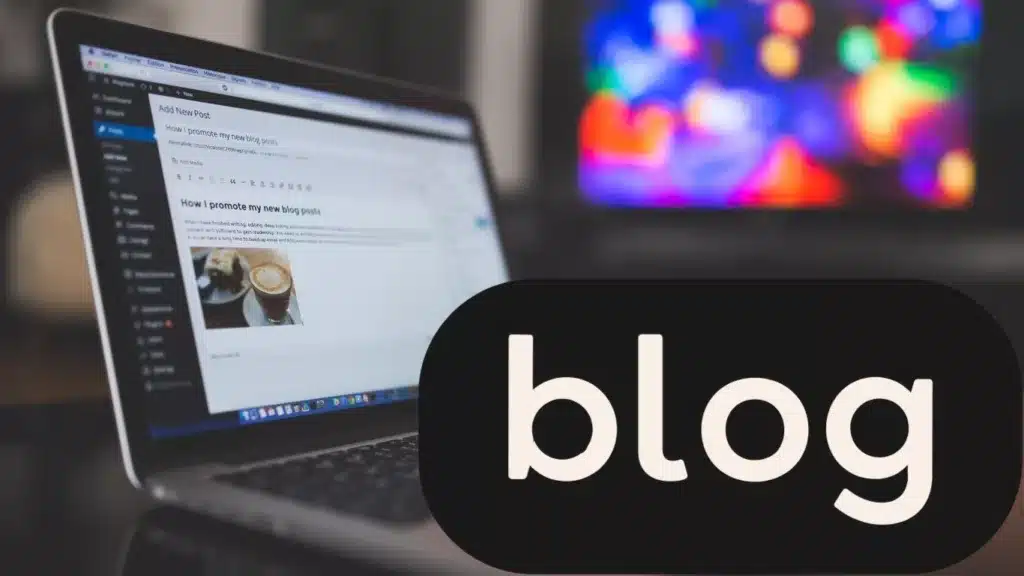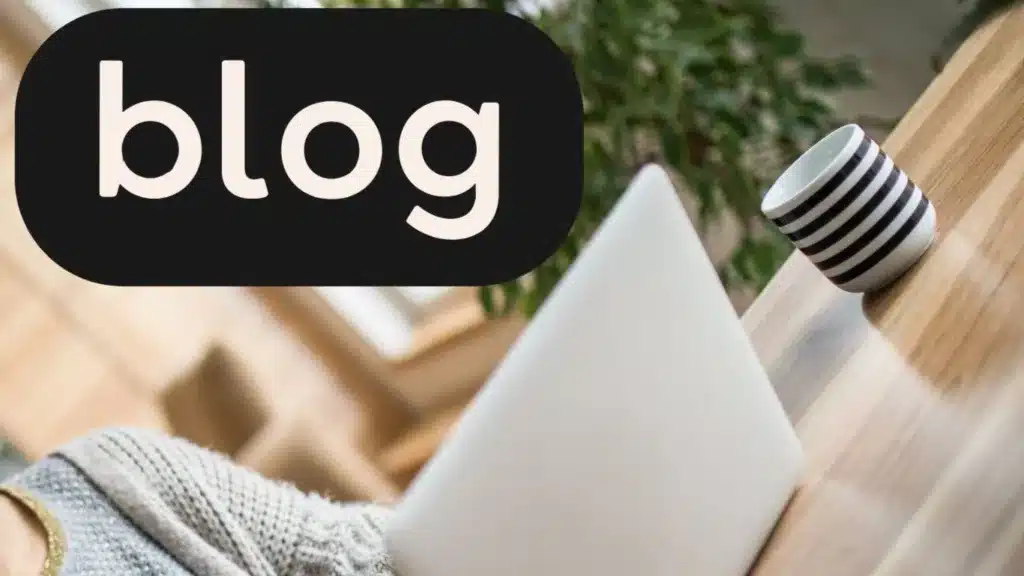
- How to Start a Personal Blog: Personal Blog
- Personal Blog
- Step 1: Choose a blogging platform
- Step 2: Choose a domain name and hosting provider
- Step 3: Install WordPress
- Step 4: Choose a theme
- Step 5: Install plugins
- Step 6: Start writing!
- Step 7: Promote your blog
- Step 8: Monetize your blog
- Step 9: Stay consistent
- Step 10: Be patient
- Step 11: Track your progress
- Step 12: Improve your blog
- Step 13: Don't give up
- How to Choose a Blogging Platform for Your Personal Blog
- How to Set Up Your Personal Blog: Personal Blog
- How to Write Blog Posts: Personal Blog
- How to Promote Your Blog: Personal Blog
How to Start a Personal Blog: Personal Blog

Personal Blog
Personal Blog: A personal blog is a great way to share your thoughts, ideas, and experiences with the world. It can also be a great way to connect with other people who share your interests. If you’re thinking about starting a personal blog, here’s a comprehensive guide to get you started.
Step 1: Choose a blogging platform
There are many different blogging platforms available, such as WordPress, Blogger, and Tumblr. Each platform has its own advantages and disadvantages, so it’s important to choose one that’s right for you. [personal blog]
WordPress is the most popular blogging platform. It’s easy to use and customize, and there are a wide variety of themes and plugins available.
Blogger is another popular blogging platform. It’s owned by Google, so it’s easy to integrate with other Google products, such as Google Analytics. [personal blog]
Tumblr is a micro blogging platform, which means that posts are limited to 140 characters. It’s a good option if you want to share short, informal updates.
Step 2: Choose a domain name and hosting provider
Once you’ve chosen a blogging platform, you’ll need to choose a domain name and hosting provider. A domain name is your blog’s address on the internet. A hosting provider is a company that stores your blog’s files and makes them accessible to visitors. [personal blog]
There are many different domain name registrars available. Some popular options include GoDaddy, Namecheap, and Google Domains. [personal blog]
When choosing a domain name, it’s important to choose something that’s relevant to your blog’s topic and easy to remember. [personal blog]
There are many different hosting providers available. Some popular options include Blue host, Host Gator, and SiteGround. [personal blog]
When choosing a hosting provider, it’s important to choose one that offers good performance and reliability.
Step 3: Install WordPress
Once you’ve chosen a domain name and hosting provider, you can install WordPress. WordPress is a free and open-source content management system (CMS) that makes it easy to create and manage a blog.
To install WordPress, you’ll need to follow the instructions provided by your hosting provider.

Step 4: Choose a theme
A theme is a pre-made design that you can use to customize the look and feel of your blog. There are many different themes available, so you can find one that matches your style.
To choose a theme, you can browse the WordPress Theme Directory.
Step 5: Install plugins
Plugins are add-ons that extend the functionality of WordPress. There are plugins available for everything from adding social media buttons to your blog to creating a contact form. [personal blog]
To install plugins, you can use the WordPress Plugin Directory.
Step 6: Start writing!
Now that you’ve set up your blog, it’s time to start writing! The best way to learn is by doing, so just start writing and see what happens. [personal blog]
Here are a few tips for writing great blog posts:
- Write about topics that you’re passionate about. [personal blog]
- Be yourself and let your personality shine through in your writing. [personal blog]
- Use clear and concise language. [personal blog]
- Proofread your work carefully before publishing. [personal blog]
Step 7: Promote your blog
Once you’ve written some great blog posts, you need to let people know about them. There are many different ways to promote your blog, such as social media, email marketing, and guest blogging. [personal blog]
Here are a few tips for promoting your blog:
- Share your blog posts on social media. [personal blog]
- Email your subscribers about your latest posts. [personal blog]
- Guest blog on other blogs in your niche. [personal blog]
- Comment on other blogs in your niche. [personal blog]
- Run contests and giveaways. [personal blog]
Step 8: Monetize your blog
There are many different ways to monetize your blog, such as advertising, affiliate marketing, and selling products or services.
Here are a few tips for monetizing your blog:
- Choose a monetization method that’s relevant to your blog’s topic and audience. [personal blog]
- Make sure that your monetization methods are not intrusive or annoying to your readers.
- Be transparent about your monetization methods. [personal blog]

Step 9: Stay consistent
The most important thing to remember is to stay consistent with your blogging. If you only publish a few blog posts once in a while, people will forget about your blog.
Here are a few tips for staying consistent with your blogging:
- Set a schedule and stick to it. [personal blog]
- Even if you can only publish one blog post per week, do it consistently. [personal blog]
- Use a content calendar to help you stay on track. [personal blog]
Step 10: Be patient
It takes time to build a successful blog. Don’t expect to become an overnight success. Just keep writing great content and promoting your blog, and eventually you’ll start to see results.
Here are a few tips for being patient:
- Don’t compare yourself to other bloggers. [personal blog]
- Focus on creating great content and promoting your blog. [personal blog]
- Don’t give up. [personal blog]
I hope this comprehensive guide has helped you learn how to start a personal blog. If you have any other questions, please don’t hesitate to ask.
Here are some additional tips for starting a personal blog:
- Choose a niche that you’re passionate about. This will make it easier to write about and keep your blog interesting. [personal blog]
- Do your research. There are many other blogs out there in your niche, so take some time to see what they’re doing and what’s working for them. [personal blog]
- Be yourself. Don’t try to be someone you’re not. Your readers will appreciate your authenticity. [personal blog]
- Have fun! Starting a blog should be enjoyable. If you’re not having fun, it will be hard to stick with it. [personal blog]
Step 11: Track your progress
It’s important to track your progress so you can see how your blog is doing. There are many different ways to track your progress, such as Google Analytics and social media analytics.
Here are a few tips for tracking your progress:
- Set goals for yourself. What do you want to achieve with your blog?
- Track your traffic. How many people are visiting your blog?
- Track your engagement. How many people are leaving comments, sharing your posts, and subscribing to your email list?
- Track your monetization. Are you making any money from your blog?

Step 12: Improve your blog
As you learn more about blogging, you’ll want to improve your blog. This could mean changing your theme, adding new plugins, or writing better blog posts.
Here are a few tips for improving your blog:
- Get feedback from others. Ask your readers and friends for feedback on your blog.
- Read other blogs. See what other bloggers are doing and learn from them.
- Experiment. Try new things and see what works for you.
Step 13: Don’t give up
Starting a blog is hard work, but it’s also very rewarding. Don’t give up if you don’t see results immediately. Just keep writing great content and promoting your blog, and eventually you’ll start to see success.
Here are a few tips for not giving up:
- Remember why you started your blog. What are your goals for your blog?
- Take breaks when you need them. Don’t burn yourself out.
- Celebrate your successes. Even small successes are worth celebrating.
I hope this comprehensive guide has helped you learn how to start a successful personal blog. If you have any other questions, please don’t hesitate to ask.
Here are some final thoughts on starting a personal blog:
- It’s a great way to share your thoughts, ideas, and experiences with the world.
- It can be a great way to connect with other people who share your interests.
- It can be a great way to build an audience and promote your work.
- It takes time and effort to build a successful blog, but it’s definitely worth it.
I hope you’ll take the plunge and start your own personal blog today!
How to Choose a Blogging Platform for Your Personal Blog

Personal Blog 2024
A personal blog is a great way to share your thoughts, ideas, and experiences with the world. But with so many different blogging platforms available, it can be tough to know which one is right for you.
In this article, we will discuss the factors you need to consider when choosing a blogging platform for your personal blog. We will also recommend some of the best platforms for personal blogging.
Factors to Consider When Choosing a Blogging Platform
Here are some of the factors you need to consider when choosing a blogging platform for your personal blog:
- Ease of use: How easy is it to use the platform? Can you create and publish blog posts quickly and easily? [personal blog]
- Features: What features does the platform offer? Do the features meet your needs? [personal blog]
- Design: How does the platform look? Is the design customizable? [personal blog]
- Cost: How much does the platform cost? Is there a free option? [personal blog]
- Support: What kind of support does the platform offer? Is there 24/7 support available? [personal blog]
- SEO: How well does the platform rank in search engines? [personal blog]
- Community: Is there a strong community of users on the platform? Can you get help and support from other users? [personal blog]
Best Blogging Platforms for Personal Blogs
Here are some of the best blogging platforms for personal blogs:
- WordPress: WordPress is the most popular blogging platform in the world. It is easy to use, has a wide range of features, and is customizable. [personal blog]
- gracethemes.com
- Blogger: Blogger is a free blogging platform from Google. It is easy to use and has a simple design.
- www.wpbeginner.com
- Tumblr: Tumblr is a micro blogging platform that is popular for sharing short posts, images, and videos. [personal blog]
- creativemarket.com
- Medium: Medium is a blogging platform that focuses on high-quality content. It is a good option for bloggers who want to share their expertise with the world. [personal blog]
- blogpros.com
- Square space: Square space is a website builder that also offers a blogging platform. It is a good option for bloggers who want to create a professional-looking blog. [personal blog]
- www.mehdiaoussiad.com
How to Make Money Blogging for Beginners

Choosing a blogging platform for your personal blog is an important decision. By considering the factors we discussed in this article, you can choose the platform that is right for you.
Click here to sign up for Namecheap’s shared hosting and start promoting your blog today!
Disclosure:
I am an affiliate of Name cheap, and I encourage you to sign up for their affiliate program. I will earn a commission on every sale that I refer to them. [personal blog]
I hope this information is helpful. Please let me know if you have any other questions.
How to Set Up Your Personal Blog: Personal Blog

Personal Blog set up
Starting a personal blog can be a great way to share your thoughts and ideas with the world. It can also be a great way to connect with other people who share your interests.
In this article, we will discuss the steps involved in setting up your personal blog, from choosing a blogging platform to writing and publishing your first post.
Choosing a Blogging Platform
The first step is to choose a blogging platform. There are many different blogging platforms available, such as WordPress, Blogger, and Tumblr. Each platform has its own advantages and disadvantages. [personal blog]
WordPress is the most popular blogging platform. It is also the most versatile platform, and it offers a wide range of features. However, WordPress can be a bit complicated to set up and use. [personal blog]
Blogger is a good option for beginners. It is easy to set up and use, and it offers a variety of features. However, Blogger is not as customizable as WordPress.
Tumblr is a good option for people who want to create a visually appealing blog. It is also a good option for people who want to share short pieces of content, such as photos, videos, and quotes. [personal blog]
Choosing a Domain Name and Web Hosting
Once you have chosen a blogging platform, you need to choose a domain name and web hosting. A domain name is your blog’s address on the internet. Web hosting is the service that stores your blog’s files and makes them accessible to visitors. [personal blog]
There are many different domain name registrars and web hosting providers available. When choosing a domain name registrar, you should choose one that offers a variety of domain name extensions and that has a good reputation. When choosing a web hosting provider, you should choose one that offers a good amount of storage space and bandwidth, and that has a reliable uptime.

Installing Your Blogging Platform
Once you have purchased a domain name and web hosting, you need to install your blogging platform. The installation process will vary depending on the blogging platform you choose.
For WordPress, you can install it using a WordPress hosting provider or by installing it yourself on a web server.
For Blogger, you can install it by creating a new blog on Blogger’s website.
For Tumblr, you can install it by creating a new blog on Tumblr’s website.
Customizing Your Blog
Once you have installed your blogging platform, you can start customizing your blog. This includes choosing a theme, adding widgets, and creating pages.
A theme is a pre-made design that you can use to change the look and feel of your blog. Widgets are small blocks of content that you can add to your blog, such as a calendar, a social media feed, or a contact form. Pages are different from posts in that they are not displayed on your blog’s homepage. They can be used to create a separate section for your about page, your contact page, or any other content that you want to keep separate from your blog posts. [personal blog]
Writing and Publishing Your First Post
Once you have customized your blog, you can start writing and publishing your first post. When writing your post, make sure to include a catchy title, relevant keywords, and engaging content. [personal blog]
You can publish your post by clicking on the “Publish” button.
Promoting Your Blog
Once you have published your first post, you need to start promoting your blog. This can be done through social media, email marketing, and other channels.

How to Make Money Blogging for Beginners
Setting up a personal blog can be a great way to share your thoughts and ideas with the world. By following the steps in this article, you can set up your personal blog and start sharing your content with the world. [personal blog]
Click here to sign up for Namecheap’s shared hosting and start promoting your blog today!
If you’re ready to start a personal blog, click here to sign up for Name cheap’s shared hosting and save 51% on your first year!
Hauser Info Disclosure
I am an affiliate of Name cheap, and I encourage you to sign up for their affiliate program. I will earn a commission on every sale that I refer to them.
Here are some additional tips for setting up your personal blog:
- Use keywords: When writing your blog posts, use relevant keywords throughout your content. This will help people find your blog when they search for those keywords. [personal blog]
- Optimize your blog for SEO: There are a number of things you can do to optimize your blog for search engines, such as using relevant keywords, creating backlinks, and submitting your blog to directories. [personal blog]
- Engage with your readers: Respond to comments and questions from your readers. This will help you build a community around your blog. [personal blog]
- Be patient: It takes time to build a successful blog. Don’t get discouraged if you don’t see results immediately. [personal blog]
I hope these tips help you set up your personal blog and start sharing your content with the world!
How to Write Blog Posts: Personal Blog

Personal Blog for how to write
A personal blog is a great way to share your thoughts, ideas, and experiences with the world. It can also be a great way to connect with other people who share your interests.
If you’re thinking about starting a personal blog, there are a few things you need to know. First, you need to choose a topic that you’re passionate about. Second, you need to find a voice that’s unique to you. And third, you need to learn how to write blog posts that are engaging and informative. [personal blog]
This article will teach you everything you need to know about writing blog posts for a personal blog. We’ll cover everything from choosing a topic to writing a compelling introduction to promoting your blog. [personal blog]
Choosing a Topic
The first step to writing a blog post is choosing a topic. This may seem like a daunting task, but it’s important to choose a topic that you’re passionate about. If you’re not passionate about your topic, it will be difficult to write engaging and informative content.
Once you’ve chosen a topic, you need to do some research. This will help you to learn more about your topic and to come up with ideas for blog posts. You can do research by reading books and articles, watching documentaries, or interviewing experts.
Finding Your Voice
Once you’ve chosen a topic and done some research, it’s time to find your voice. Your voice is the unique way that you write and express yourself. It’s what makes your blog posts stand out from the crowd.
There are a few things you can do to find your voice. First, read other blogs that you enjoy. Pay attention to the way the authors write and the way they express themselves. Second, write about topics that you’re passionate about. This will help you to write in a more natural and authentic way.

Writing Engaging Blog Posts
Now that you’ve chosen a topic and found your voice, it’s time to start writing blog posts.
Here are a few tips for writing engaging blog posts:
- Start with a strong introduction. Your introduction should grab the reader’s attention and make them want to read more.
- Use clear and concise language. Avoid jargon and technical terms.
- Tell stories. People love stories, so use them to engage your readers.
- Use images and videos. Images and videos can help to break up your text and make your blog posts more visually appealing.
- Ask questions. Asking questions can help to engage your readers and encourage them to leave comments.
- Promote your blog posts. Once you’ve written a blog post, be sure to promote it on social media and other online channels.
Promoting Your Blog
Once you’ve written a blog post, it’s important to promote it. This will help you to reach a wider audience and to get more people to read your content.
There are a few ways to promote your blog. You can share your blog posts on social media, submit them to directories, and guest blog on other blogs. You can also run paid advertising campaigns.
How to Promote Your Blog: Personal Blog

Blogs are a great way to share your thoughts and ideas with the world, but if you want people to read them, you need to promote your blog.
Here are a few tips on how to promote your personal blog:
- Write great content. This is the most important thing you can do to promote your blog. If your content is good, people will want to read it and share it with their friends.
- Use social media. Share your blog posts on social media, such as Twitter, Facebook, and LinkedIn. You can also use social media to connect with other bloggers and promote each other’s work.
- Guest blog. Guest blogging is a great way to get exposure for your blog. Find other blogs that are related to your niche and offer to guest blog for them.
- Run contests and giveaways. This is a great way to get people excited about your blog and attract new readers.
- Use SEO. Search engine optimization (SEO) can help people find your blog when they search for keywords related to your niche. There are a number of things you can do to improve your blog’s SEO, such as using relevant keywords in your titles and meta descriptions, and building backlinks to your blog.
- Be patient. It takes time to build a successful blog. Don’t get discouraged if you don’t see results overnight. Just keep writing great content and promoting your blog, and eventually you will start to see traffic and engagement.
Here are some additional tips that you can follow:
- Use images and videos. Visual content can help to make your blog posts more engaging and visually appealing.
- Be consistent. Try to publish new blog posts on a regular basis. This will help to keep your readers coming back for more.
- Interact with your readers. Respond to comments and questions, and participate in discussions on social media. This will help to build relationships with your readers and make them feel like they are part of a community.
- Track your results. Use analytics tools to track the performance of your blog so that you can see what’s working and what’s not. This will help you to optimize your promotion efforts.
By following these tips, you can promote your personal blog and attract new readers.

Here are some of the benefits of promoting your blog:
- Increase traffic: When you promote your blog, you can increase the number of people who see your content. This can lead to more website traffic, which can help you to grow your audience and generate more leads and sales. [personal blog]
- Build relationships: Promoting your blog can help you to build relationships with other bloggers and influencers in your niche. This can lead to opportunities for collaboration, guest blogging, and other mutually beneficial relationships. [personal blog]
- Increase brand awareness: When you promote your blog, you can increase brand awareness for your business or personal brand. This can help you to attract new customers and clients. [personal blog]
- Generate leads and sales: If you have a business blog, promoting your blog can help you to generate leads and sales. You can do this by including calls to action in your blog posts, such as inviting readers to sign up for your email list or purchase your products or services.
Here are some of the challenges of promoting your blog:
- It takes time: It takes time to build a successful blog and attract a large audience. Don’t expect to see results overnight.
- It can be expensive: There are a number of ways to promote your blog, and some of them can be expensive, such as running paid advertising campaigns.
- It can be difficult: Promoting your blog can be challenging, especially if you don’t have a lot of experience. There are a lot of things to keep track of, and it can be difficult to know where to start.
Click here to sign up for Namecheap’s shared hosting and start promoting your blog today!
Hauser Info disclosure:
I am an affiliate of Name cheap, and I encourage you to sign up for their affiliate program. I will earn a commission on every sale that I refer to them.
I hope this article has been helpful. If you have any questions, please feel free to ask.





okay
whenever you ready
dhauser782@gmail.com
dhauser782@gmail.com